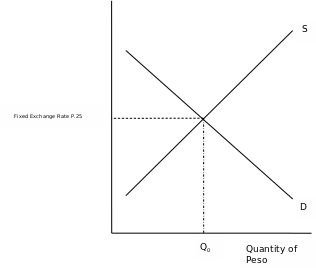Taiwan
Taiwan operates a flexible exchange rate for the reason that there is a great variability in the value of the official foreign exchange reserves. Exchange risk is defined as the variability in the reserves value that is caused by uncertainties in exchange rates. Generally, exchange risk is viewed as the possibility that currency fluctuations can alter the expected amounts or variability of future cash flows. This is usually in the case of flexible exchange rates. Taiwan is a free market economy. Free markets allow free movement of goods, and services across the borders and most of the products are sold depending on the conditions of the market (Witzel, 2003).
The exchange rate adopted by Taiwan has not had the capacity to deliver effects like increased economic policy, stability of exchange rates and improved balance of payment when there is crisis as the one brought by the threat by China. This is because the system has not embraced market interventions and surveillance procedures to cushion both the economically strong and weak units from financial losses that result from unchecked exchange rates. Using the United States dollar as the standard exchange rate means that when the dollar is strong, the weaker units loose and the vice versa is true. When the dollar is expensive, the strong units carry out dumping mechanisms in the market. This implies that the weak units are not able to trade at a price that relates to their production and processing costs thereby resulting into losses in the long run.
Risk Averse and Risk Seeker
(i) Discount/premium rate = [(Spot exchange rate- Forward exchange rate)/Forward exchange rate] * [360/n] * 100%
[(100 – 90)/90] * [360/180] * 100% = 22.2%
Yen will be selling at a premium of 22.2% against the U.S. dollar.
A risk averse investor should put his assets in Yen given that Yen will sell at premium of 22% against the U.S. dollars if he/she buys the future contract. However, he/she should determine the price of buying the future contract.
(ii) Discount/premium rate = [(Spot exchange rate- Forward exchange rate)/Forward exchange rate] * [360/n] * 100%
[(100 – 110)/110] * [360/180] * 100% = 18.18%
Yen will be selling at a discount of 18.18% against the U.S. dollar.
A risk taker who believes that future spot exchange rate for the next 180 days will be $1/110¥ should put his/her assets in U.S. dollars. This is because Yen will be selling at discount of 18.18% against the U.S. dollars.
Exchange Rate equilibrium
The equilibrating process is a process whereby the market forces of demand and supply interact in such a manner as to ensure the maintenance of equilibrium in the market and thus providing the greatest possible efficiency in the market when it comes to utilization as well as distribution of resources. The dollar/ Mexican peso exchange rate is the number of dollars one Mexican peso will buy. To understand how exchange rates are set, it helps to recognize that they are market-clearing prices that equilibrate supplies and demands in foreign exchange markets.

For exchange rate to remain in equilibrium there must be no interest rate parity between Mexican peso and the U.S. dollar. An increase in the Mexican peso’s dollar value is equivalent to an increase in dollar price of Mexican products. This higher dollars price normally will reduce the U.S. demand for Mexican goods, assets, and services. Conversely, as the dollar value of Mexican peso falls, Americans will demand more Mexican peso to buy the less- expensive Mexican products, resulting in a downward- sloping demand curve for Mexican peso.
References
Witzel, M. (2003). Fifty Key Figures in Management. London: Routledge.